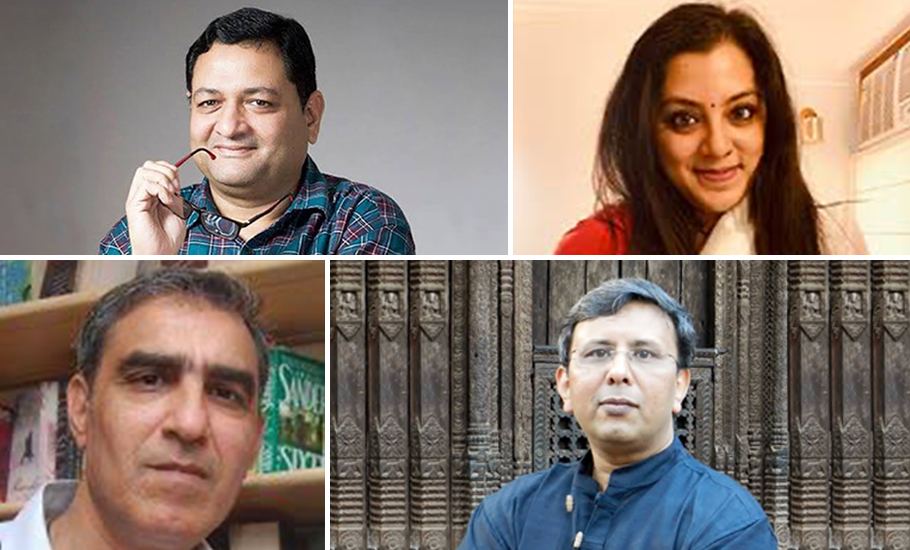
Publishing trends in 2022: Four Indian trade publishers look back, and ahead

Thomas Abraham
Managing Director,
Hachette India
The pandemic year of 2020 was a disaster for most publishers simply from the fact that we had four months of zero sales. Unlike the West where book sales grew by leaps and bound during lockdowns, we had the reverse effect because books were not allowed to be sold—not being considered essential goods here. But though the overall year may have been a terrible one, looking at the monthly performance, we saw that it was quite good. And this was because online really managed to establish itself substantively with over 70% of sales. And that continued well into 2021 where, without any national lockdowns, we had a full uninterrupted year and really good sales.
We expected 2022 to be good too, but the year saw a massive growth spurt (about 60%) and Hachette India has just closed its most successful year ever. And what’s particularly pleasing is that this is not off the backs of one or two aberrant sellers that tend to skew a year. It’s been a consistent performance across the board though a few concerns remain for frontlist (what publishers call new releases in a year).
So, what drove this growth? There are two or three factors as far as Hachette India is concerned. 2022 saw the return of brick & mortar shops that have been the star turn in cementing the year’s solid performance. Readers seemed to be going to bookstores in a big way and many stores reported strong sales. The reverse buyout of Crossword by its franchisee promises well. And certain trends drove sales like never before.
Standout titles were Indra Nooyi’s My Life in Full, which continued its run to top a 100,000 copies. And there was a whole raft of BookTok-driven (in the West) bestsellers from authors like Colleen Hoover and Ali Hazelwood. Graphic novels saw an explosion whether it be traditional favourites like Asterix or the new teen sensation Heartstopper. Fantasy also saw a comeback with the Wheel of Time and The Witcher series doing well. Booker-winner Shehan Karunatilaka’s new book of stories, The Birth Lottery and Other Surprises, and Edelweiss CEO Radhika Gupta’s Limitless were the strong local publishing leads.
Commercial fiction doesn’t do well in India: This is a strange thing rather peculiar to India. So, leaving aside the break-out sellers who straddle genres (Chetan Bhagat in general commercial fiction, Amish Tripathi in mythology, or Silent Patient in crime & thriller; and a bunch of BookTok sellers now in romance), India’s commercial segments in fiction don’t do well. So, herein lies the irony — literary fiction and commercial fiction will both end up selling the same ballpark if they don’t break out. This is very different from the West where commercial segments (as the name implies) will do a bit better. This is because our leisure reading (for entertainment) has declined over the past 5-7 years. Even standard brands, like Jeffrey Archer and Lee Child etc., have declined. This is possibly from a transference to screen after the OTT explosion. But take a look at the bookstores. The commercial sections have shrunk, and genres like SFF have all but vanished (barring a few stores).
Non-fiction always has sold more than fiction and that’s understandable. What’s worrying is the narrowing of the type of reading — less for entertainment, and only if there’s buzz or a clear ‘get ahead’ plank. In non-fiction, the sub-genre that does well is memoirs of a certain sort. So, big topicality leads to big buzz… and, yes, they will do well. In the same way, business books of a certain kind: of late, for us, productivity-oriented books have been flyers (Deep Work, Mindset, The One Thing, Robert Greene et al).
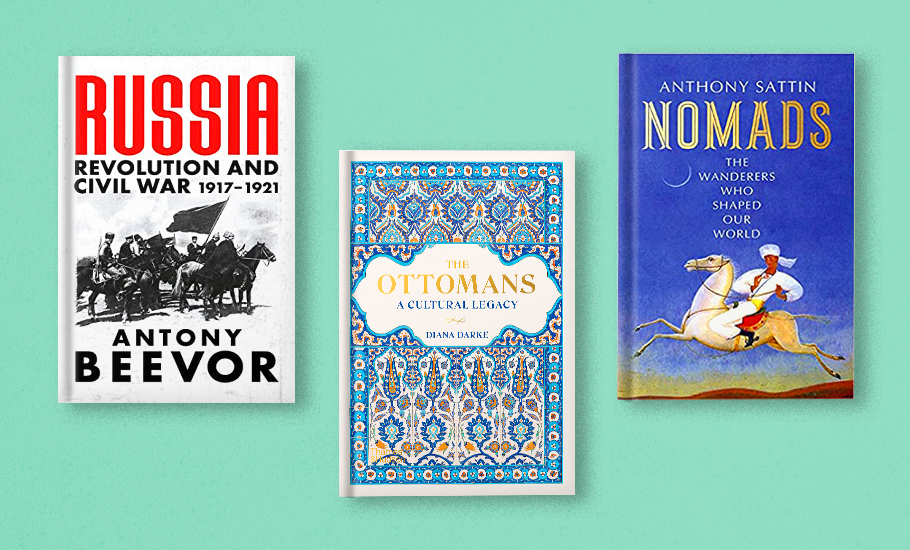
History always does well. We have Simon Sebag Montefiore’s “magisterial” 1,300 page history of the world through families coming out now and he’ll be in India for the Jaipur Literature Festival. Antony Beevor’s Russia: Revolution and Civil War 1917-1921, Anthony Sattin’s Nomads: The Wanderers Who Shaped Our World, and Diana Darke’s The Ottomans: A Cultural Legacy have all done well. The Garodia sisters’ (Archana and Shruti) history for children has also been a big bestseller. And Charles Allen’s final book will also be released in 2023. As for the Indian history books for adults, perhaps mirroring the times we live in, there is a clear rise of the right wing history/politics book.
Also read: The Federal’s 15 notable books (fiction) of the year 2022
One concern that remained (and this has been building over the past few years even before the pandemic) is the strong decline in the frontlist. So, yes books do break out and when they do they are bigger than before. But the average has fallen off massively. The monitored market (Nielsen Bookscan) shows that for a few years now, over 95% of new releases in a year have been selling less than 500 copies. But Hachette is a range publisher with a very strong backlist, so we had a great year off the success of favourites like Mindset, The Silent Patient, Deep Work: Rules For Focused Success, Tuesdays With Morrie, all of which topped 50,000 copies.
We expect these trends to continue in 2023, in a seamless continuation from 2022, and our publishing programme will reflect these. On the domestic front, translations have been the lead literary story and we have some great offerings in Sin: Stories by Wajida Tabassum, translated by Reema Abbasi, and Tarana Husain Khan’s The Begum and the Dastaan from the Urdu, and Kalki Krishnamoorthy’s The Sound of Waves, translated by Gowri Ramnarayan; The Four Hundred Songs of Love and The Chariot of Wisdom from the Tamil. Two major series launches in the new year must be mentioned: the Asterix compact omnibuses releasing in February and the great yellowbacks revival (a full collection of classics but of popular pulp fiction straddling genres like crime fiction and adventure thrillers) in April.
Udayan Mitra
Executive Publisher
HarperCollins Publishers India
It has been a very good year for the publishing industry in India. After the pandemic, what has been heartening to see is that people are continuing to read, to buy new books, to value books as part of their lives. The retail delivery mechanism is back up to speed, with both online and physical retail operating efficiently. And the media has helped keep a focus on some of the wonderful books that are being published — as indeed it did through the times of the pandemic as well.
In terms of international recognition for writing from South Asia, it has been an exceptional year, with both the Booker Prize and the International Booker going to South Asian writers. It is in fact a great time for publishing in India — with some great new debut writers being published, alongside strong books from established authors. This extends across genres — from literary to popular fiction, general non-fiction to commercial non-fiction, business books to children’s books, there’s a wonderful selection out there for readers to choose from.
As a publisher, I’ve noticed a trend for longer manuscripts coming in after the pandemic, with authors perhaps having had the time and inclination to give a larger, more ambitious shape to their narratives. This holds true for both fiction and non-fiction, and to an extent reverses the trend for shorter narratives, where the book publishing industry was headed say three years ago.
This poses a bit of a challenge to the industry incidentally as book publishing is facing a fairly unprecedented materials shortage and escalating costs for raw material etc; longer narratives might well lead to higher book prices in India than we’ve been accustomed to seeing, and a new pricing model is something that readers, retailers and publishers might well need to face up to next year.
The good news is that despite the challenges, the publishing industry in India is growing — both in terms of volume and value. For HarperCollins, it has been a stellar year — marked by several award wins, a general appreciation and love for our books across genres, and very good sales numbers (at the top of our bestsellers list for the year is Amish’s new book War of Lanka). 2022-23 is HarperCollins India’s 30th year, and we have a year of publishing we’re really looking forward to — with a very large bouquet of books that will be of interest, we hope, to a wide readership.
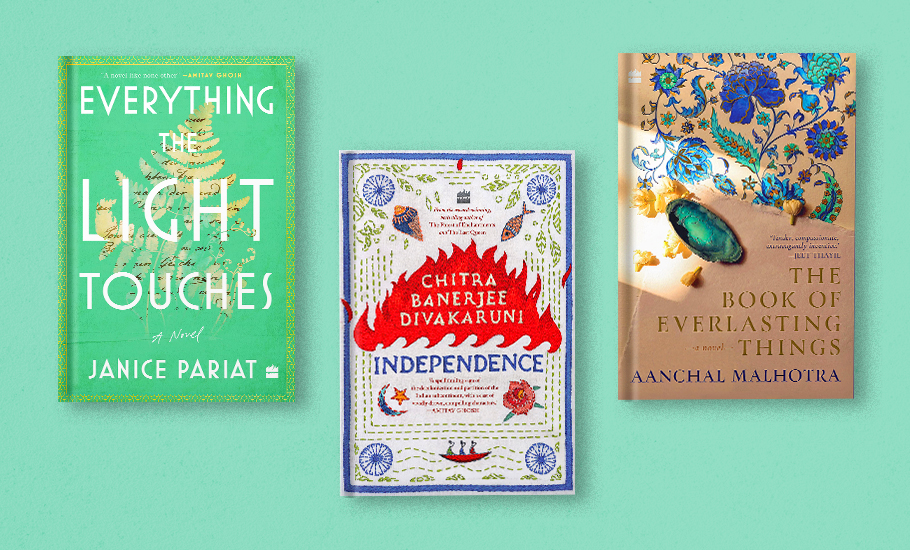
We publish about twice as many non-fiction titles compared to fiction in a year, and books in both segments have done well and been received well. Among our biggest fiction books of the year (alongside the popular fiction list where we’ve had many successes) are Janice Pariat’s Everything the Light Touches, Chitra Banerjee Divakaruni’s Independence, and Aanchal Malhotra’s The Book of Everlasting Things.
Major non-fiction successes for the year include The Book of Dog and Shrayana Bhattacharya’s Desperately Seeking Shah Rukh, both of which are about a year old now, alongside AS Dulat’s memoir A Life in the Shadows, which has just been published. In the business books segment, Narotam Sekhsaria’s The Ambuja Story, Harish Mehta’s The Maverick Effect, and Karan Bajaj’s The Freedom Manifesto have been especially successful.
We publish a small curated list of quality translations; Sheela Tomy’s novel Valli, translated by Jayasree Kalathil, was the standout book in this segment — it was nominated for several awards (including the JCB Prize shortlist).
Krishan Chopra
Editor-in-Chief,
Bloomsbury India
For a time when everything came to a standstill, the Covid period was surprisingly productive. This year saw many books commissioned during that time appear in bookstores now, and some very good ones — memoirs, contemporary issues, foreign affairs, politics, environment, economy. And, of course, self-help, which seems to be the vein every publisher taps to strike gold.
Occasionally, however, breaking into this cosy club occupying the top rankings in Amazon were other books — remarkably, Gitanjali Shree’s Tomb of Sand in both Hindi and English, but also some serious non-fiction.
Bloomsbury had its share of the top slots and J. Sai Deepak’s India That Is Bharat remains a consistent seller, as does its sequel, India, Bharat and Pakistan. So, there is an appetite for books that look back, for instance, at the politics of Partition.
In general, this reflects the churn going on to once again re-evaluate and come to terms with the past. This will be an ongoing process and helpful if constructively done — an objective assessment rather than an agenda-driven one. In general, the great epics continue to yield more nuggets — motivation, subtexts, highlights — and books on the Mahabharata and the Ramayana had their share of success.
Also read: ‘Novelist as a Vocation’ review: How Murakami animates the surreal world of his fiction
What one would like to see is bigger numbers for some of the outstanding non-fiction and fiction that was also published during the year. While some managed to get good coverage, one would hope for bigger numbers. Small print runs create a problem of pricing, and books that appeal to the quintessential reader —reading for pleasure rather than any specific purpose — become harder to publish.
These are the backbone of any publishing programme — being able to give a voice to those thoughtful writers who have spent years examining a subject or writing from first-hand experience.
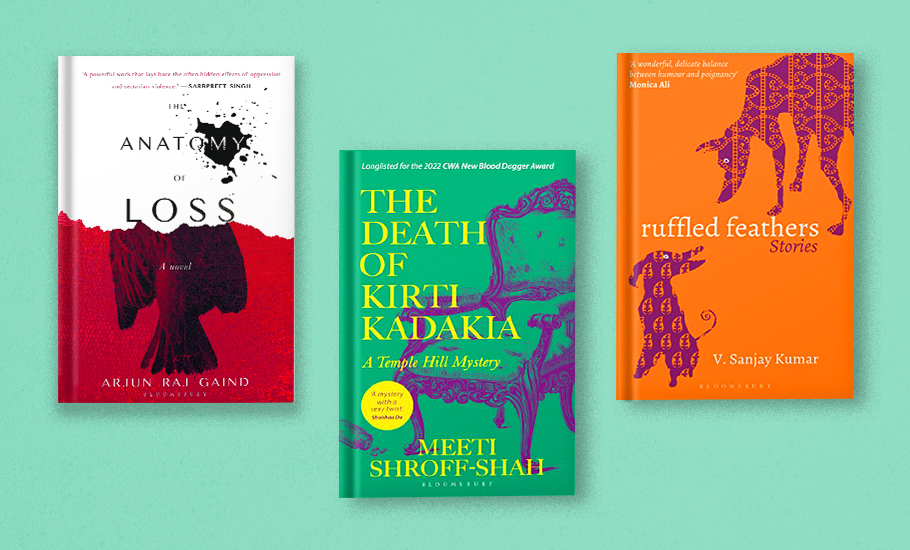
Bloomsbury published some gripping narratives, Avni: Inside the Hunt for India’s Deadliest Man-eater by Nawab Shafath Ali Khan; What’s Left of the Jungle: A Conservation Story by Nitin Sekhar; in fiction, The Anatomy of Loss by Arjun Gaind. Also in quality fiction there was the intriguing The Death of Kirti Kadakia by Meeti Shroff-Shah, and Ruffled Feathers by V. Sanjay Kumar, among others. Another book that has made a splash is Kalam: The Untold Story by R.K. Prasad, which is full of interesting anecdotes and fresh insights into his life.
And, yes, in the self-help category, we have a very worthwhile read in Fit at Any Age by Air Marshal P.V. Iyer (retd). How often do you have a 92-year-old author who can teach you a lot about staying fit?
Trisha De Niyogi
COO & Director,
Niyogi Books
While the first of 2022 was slow, we saw an uptake from July onwards. With several titles stalking out of the first print in less than two months of the launch, the second half of the year has been promising. It seems to shake off the inertia of the COVID and lockdown years. However, we saw a far better movement in non-fiction titles — illustrated as well as non-illustrated. In the pre-COVID period, there might have been some doubts about the existence of illustrated books, but post-COVID the trend seems to have reversed. We see more people buying our highly researched large format illustrated books ranging from textiles to travel, biographies to architecture and more.
Our ‘Pioneers in Modern India series’ was released in July 2022 and all titles have moved into second reprints and more. The initial set of the series included monographs on Rani Gaidinliu, Sarada Devi, Muthulakshmi Reddy, Homi J Bhabha, RK Laxman, Heisnam Sabitri, Jamini Roy and Charu Majumdar.
However, distribution has been a concern. While deep discounting on the online platforms remains a concern for the publishers, the ease of listing books is not the same anymore. However, with time as physical bookstores are becoming culture centres of the cities and towns, it has become easier to work with them, perhaps, because of the human touch. Having said that, we are seeing a positive slope for 2022. We are also looking forward to the two book fairs early next year. As they say, well begun is half well done!
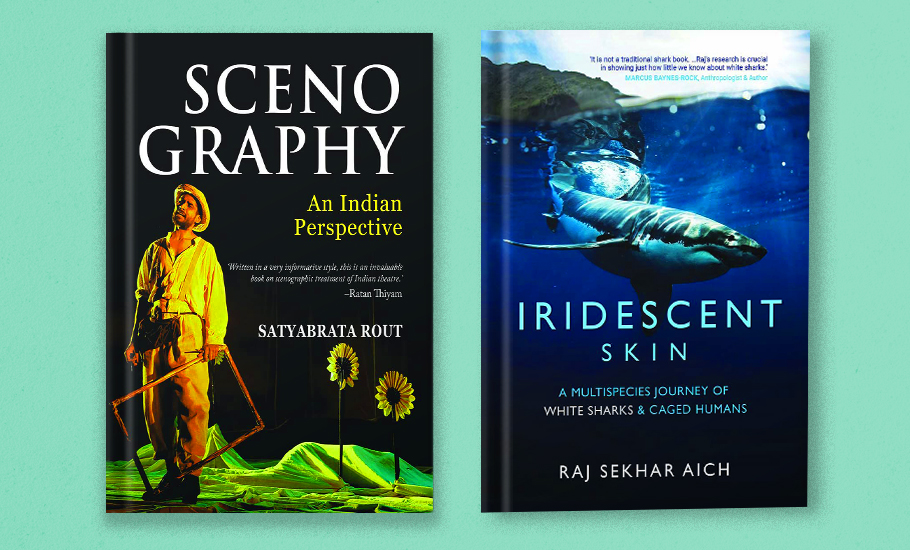
Non-fiction, especially self-help, is the most successful genre in general trade. There is specifically a growing demand for health and fitness books. History, biography and politics have been selling all throughout the year. But this year, we took up two very challenging projects which do not have much of a predecessor in the Indian market: by Raj Sekhar Aich’s Iridescent Skin: A Multispecies Journey of White Sharks and Caged Humans and Scenography: An Indian Perspective.
While the first book is, on the surface, a sensory narrative of human and white shark encounters, but beneath the ripples, it is a story of love: among humans, rivers, oceans, bricks, stones, and sharks; the second one unearths this astonishing yet silent contribution of ‘stage’ design in Indian theatres throughout the ages and the comparatively recent appropriation of it. Both these titles have slow beginnings but have picked up pace now as the novelty and the importance of these books are being recognised.
We have also seen translations going strong this year as well. I sincerely remember some of the pioneers in this regard — Nirmal Kanti Bhattacharjee, Mini Krishnan, Urvashi Butalia, Geeta Dharmarajan — and thank them for laying the stepping stone for promoting Indian literature in translation, especially in English. Our imprint for translations, Thornbird, has seen significant demand.
Translations, both fiction and non-fiction, are making tremendous ripple in the publishing space, specially fiction and translators, more than ever, are being recognised for their tremendous contributions. In fact, the shortlist of the JCB Prize for Literature this year is perhaps a proof of that.
However, last year, we limited original fiction publishing to only the manuscripts we unanimously loved within our team. In the last year, I have interacted with many readers and found out that apart from many other factors, the drop in leisure reading has also been responsible for the drop in interest in fiction. While ‘binge watching’ has gone up, ‘ binge reading’ has significantly dropped.


